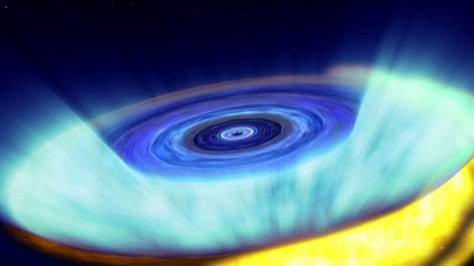Rare Star Explosion Reveals Black Hole In Milky Way Galaxy [VIDEO]

NASA scientists have discovered a black hole near the center of our Milky Way galaxy after observing an extremely rare star explosion.
The X-ray nova reached its peak on Sept. 18, soon revealing the inconspicuous black hole. After detecting a “new and rapidly brightening X-ray source,” scientists observed the nova over the course of several days, according to Space.com.
A nova occurs when a star expels a large amount of gas toward a nearby black hole or neutron star. Unlike a supernova, however, the star is not completely destroyed in the process. In this case, the black hole “munching” on the expelled gas allowed it to be seen. Astronomers say that witnessing such an event is extremely rare.
"Bright X-ray novae are so rare that they're essentially once-a-mission events and this is the first one Swift has seen," said Neil Gehrels, of NASA's Goddard Space Flight Center, in Greenbelt, Md., in a statement. "This is really something we've been waiting for."
Scientists viewed the phenomena via NASA’s Swift satellite and named the X-ray nova Swift J1745-26, after its coordinates in space. It is an estimated 20,000 to 30,000 light-years away from Earth in the Milky Way’s inner region.
Boris Sbarufatti, an astrophysicist, from Milan's Brera Observatory, and a member of the Swift team, said even in their rarity, the X-ray novae usually observed tends to be those where the central object is a black hole.
"Once the X-rays fade away, we hope to measure its mass and confirm its black hole status," Sbarufatti said in an Oct. 5 NASA statement.
The Swift team believes that Swift J1745-26 is a part of a “low-mass X-ray binary system,” comprised of the newly discovered black hole and a sun-like star. They theorize that after several decades of steadily syphoning gas from its star, a “glitch” caused an excessive amount of gas to accumulate around the black hole’s surrounding disk, causing the nova.
The system, being most luminous in X-rays, allowed scientists to detect the event.
© Copyright IBTimes 2024. All rights reserved.






















